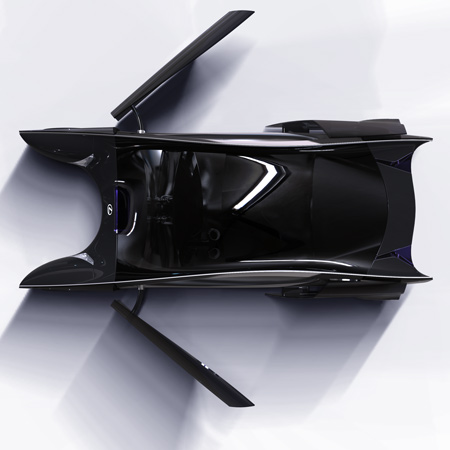
Swedish automotive design graduate Jon Rådbrink presented a concept for a catamaran-shaped car at the Royal College of Art graduation show in London last month.
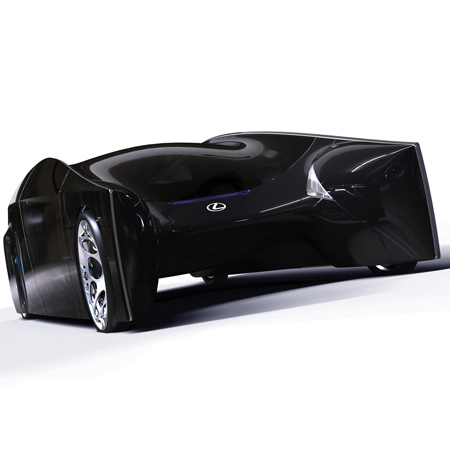
Called the Lexus Nuaero, it features motors in the wheels and a touch-screen dashboard where the information and controls can be moved around.
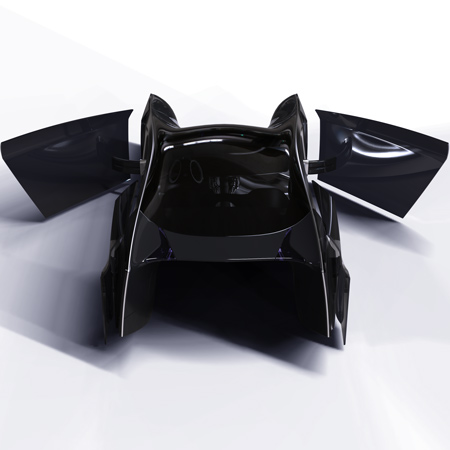
The driving system is controlled solely by hand without the use of foot pedals; to break, the driver pushes the steering wheel away from their body.
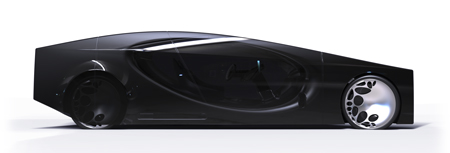
Rådbrink, a graduate from the RCA’s Vehicle Design course, won the Pilkington Award for Best Use of Glazing for his design.
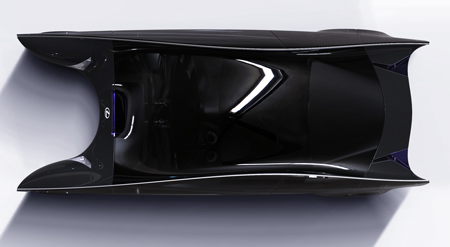
See a YouTube video of Rådbrink’s design here.
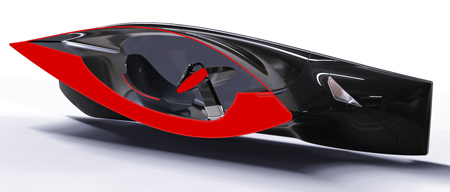
The following is from Jon Rådbrink:
–
NUAERO: (pronounced “no-ero”) represents new aerodynamics.
My final project at the Vehicle Design Dept. at the Royal College of Art is about creating a design that visually communicates sustainability through its form.
“As the environmental issues do close in, the days of vroom-vroom and big engines are gonna go away.” Kevin Gaskell, CEO, EurotaxGlass’s International
The core of concept of sustainability is efficiency. In the future we will have to have vehicles that are efficient in every way; from their efficient use of and lightness in materials, their efficient form and architecture, to their efficient use of fuel and resources.
My Lexus Nuaero concept proposes a new design language to communicate ecological efficiency through an architecture inspired by aerodynamics. I’ve been looking at different basic principles and ideas about aerodynamic efficiency and then combined them into a unique vehicle architecture. Usually aerodynamics is a final stage in car design, so this project kind of started where most projects finish.
The final design features a flowing catamaran underbody – made possible by in-wheel motors and hub-center steering – that ends in a massive venturi tunnel between the rear wheels. A super low-drag body is achieved by using an airfoil (wing profile) center, that blends between the nearly flat rearward tapered sides. To smoothly guide the air around the cabin, the angle of attack of the airfoil is optimized for efficiency while creating negative lift.
The design language of the Lexus Nuaero concept consist of two parts: Visual Aerodynamics and Contrasting Elements. The idea of combining seemingly contrasting elements in harmony comes from the local and global acceptance of Japanese-inspired design and cultural form (Toyota J-Factor).
This design paradox can be found in the contrast between the geometric side surfaces and the organic volumes in-between. The glazed side layers are inspired by building facades to give depth and to erase the border between the interior and the exterior.
The spacious interior is centered around a multi-point touch screen dashboard where you can re-arrange the controls and information as you like it. The drive-by-wire steering pad is designed to focus on your hands. Its form controls the way you interact with it; to improve safety when driving. Your fine motor skills are far more advanced in your hands than in your feet, so all controls are located in the steering wheel. Since the car is powered by electrical motors, there is no transmission and you break intuitively by pushing the steering wheel away from your body.
The Lexus Nuaero has the dimensional impact of a luxury car, with an overall length of 4730 mm and a wheelbase of 3300 mm. The width is 1999 mm and the height is 1245 mm. But, in spite of its large presence, the approximated weight of just over 800 kg is not far from that of a SMART fortwo. I believe that this design paradox of low weight and large presence could be the way we’ll define premium in the future.
No comments:
Post a Comment